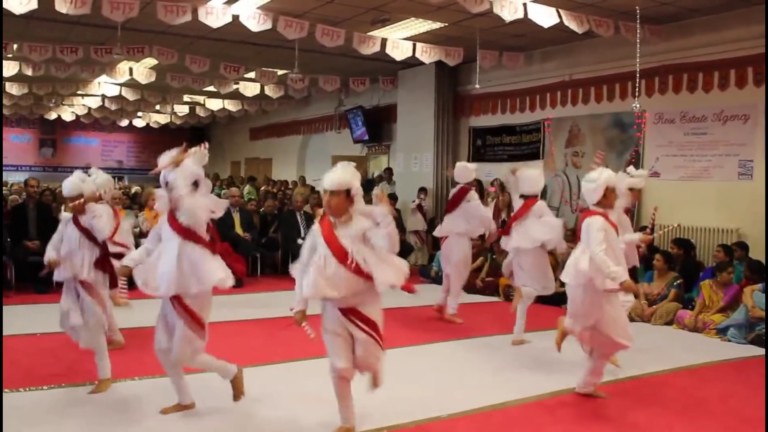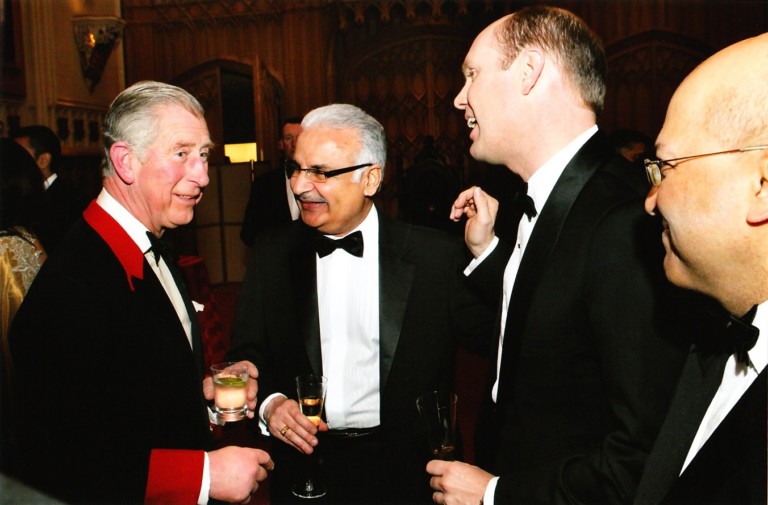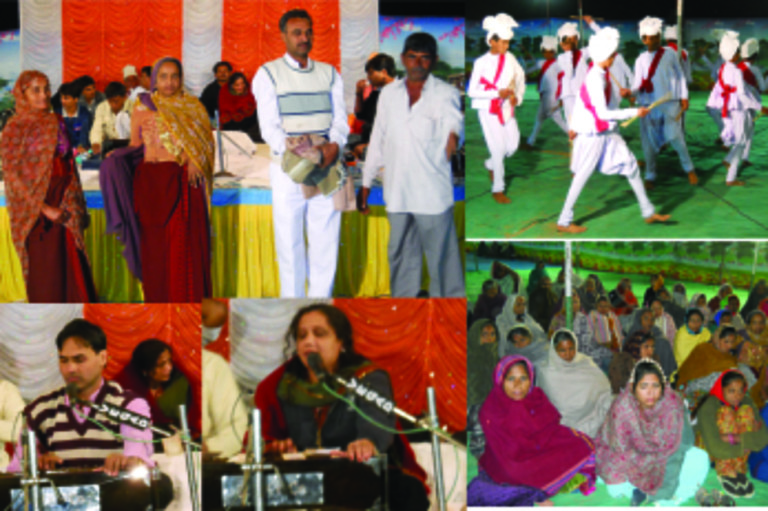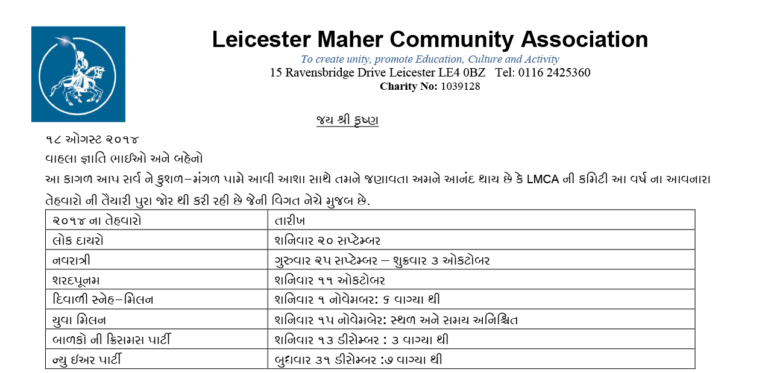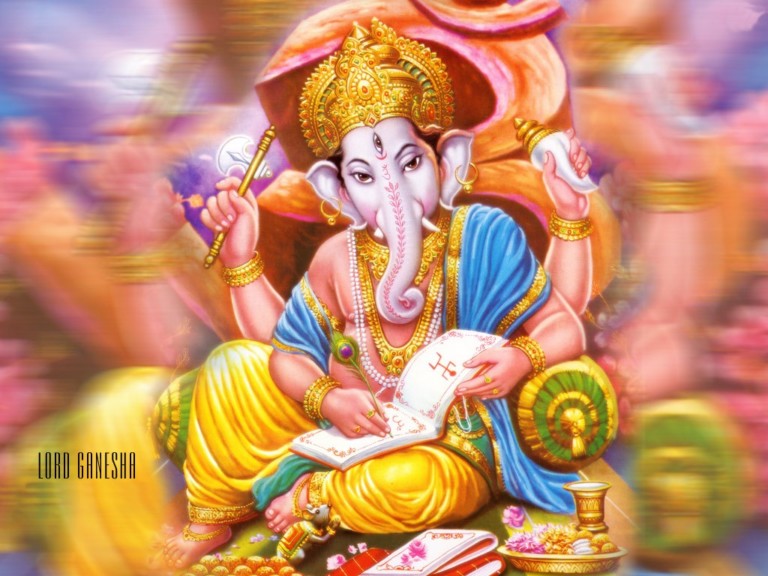Maher Dandia Raas team performed at the Shree Hindu Temple, Leicester during the auspicious Shree Ram Katha, recited by Shastri Dilipbhai Joshi. The 9 day Shree Ram Katha was organised and held the Shree Hindu Temple and Community Centre, 34 St. Barnabas Road, Leicester, UK from Saturday 23rd June to 1st July 2012.
Shree Ram Katha was the biggest event held the temple this year and it had a grand pothi yatra (procession) to match the grand occasion. Katha was recited in the morning and afternoon, during both times maha prasadi was served to thousands of people who attended the event.
On the 8th day of the katha, many VIP’s were invited to the event, that included Jennifer, Lady Gretton, as Lord-Lieutenant, is the official representative of Her Majesty The Queen for the County and City of Leicestershire. Also included Lord Mayor of Leicester, Local Councillors, Representative of other faiths and temples. During this our junior dandia raas team performed two traditional dances in front of packed temple.
Here are video clips of the raas.
{youtube}hHevPW972TU{/youtube}
{youtube}rdQBKVIVPV0{/youtube}
{youtube}3qyASnTBlkY{/youtube}
Junior Dandia Raas team performs at the temple
Mataji Murti Pratishta at the Maher Centre Mandir
Mataji Murti Pratishta at the Maher Centre Mandir, Leicester was performed on Tuesday 22nd May 2012. Mataji’s Murti has been donated by Mr Bhura Munja Jadeja (India).
This auspicious ceremony was performed by between 4pm – 5pm by Mrs Geeta Mahesh Karavadra and Mr Mahesh Karavadra (daughter and son-in-law of Mr Bhura Munja Jadeja).
The ceremony was followed by monthly Bij Bhajan & Kirtan.
Maha Prasadi (evening meal) was donated by Mr Mahesh Karavadra of Peterborough, UK.
{phocagallery view=category|categoryid=146|limitstart=0|limitcount=20|detail=3|displayname=0|displaydetail=0|imageshadow=shadow1}
Dr Bhima Odedra invited to Queens Diamond Jubilee Celebration event
Dr Bhimabhai Odedra of Bushby, Leicester (UK) was invited to be a guest at Queens Diamond Jubilee Celebration event held at the Windsor Castle, Windsor, UK on Monday 13th February 2012.
The event was hosted by His Royal highness The Price of Wales (Prince Charles) and it was attended by around 180 invited guests.
This is great achievement for Dr Bhimabhai Odedra and his family and also a greater achievement for our community to see that his hard work and dedication to community projects has been recognised by the Asian Community.
We should all be proud to have a such person in our community, congratulation and best wishes from Maher Community.
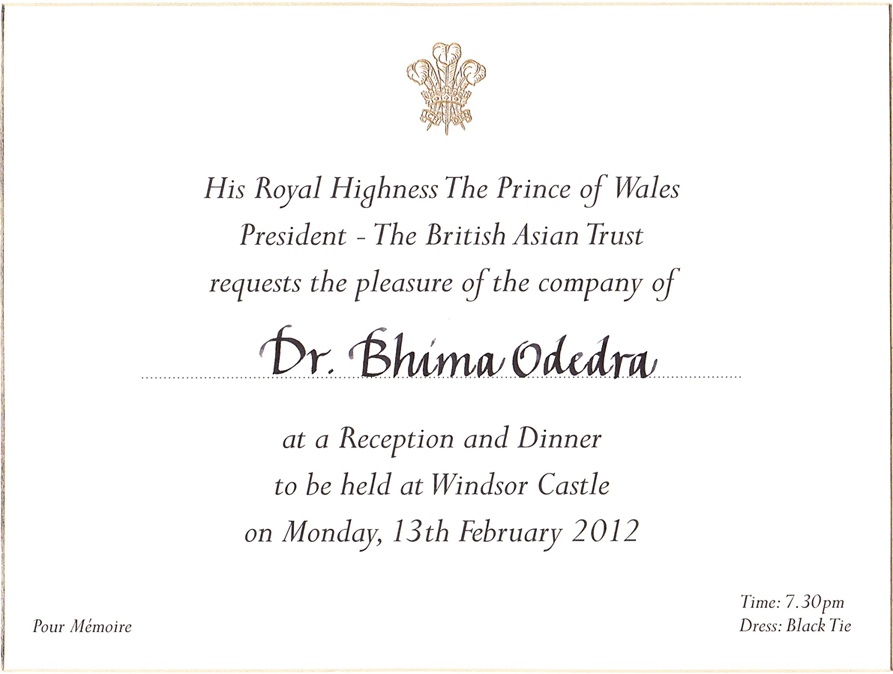
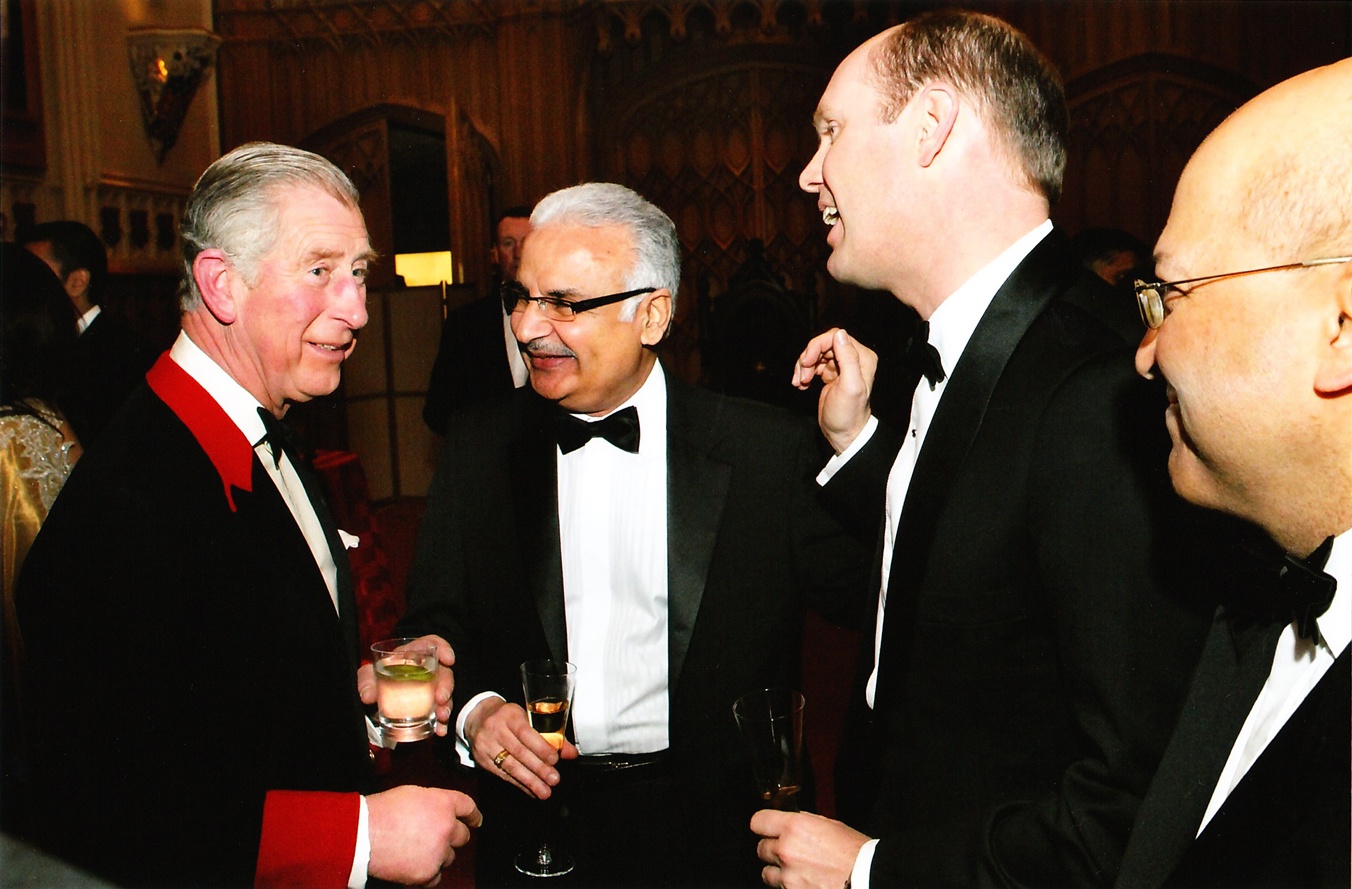

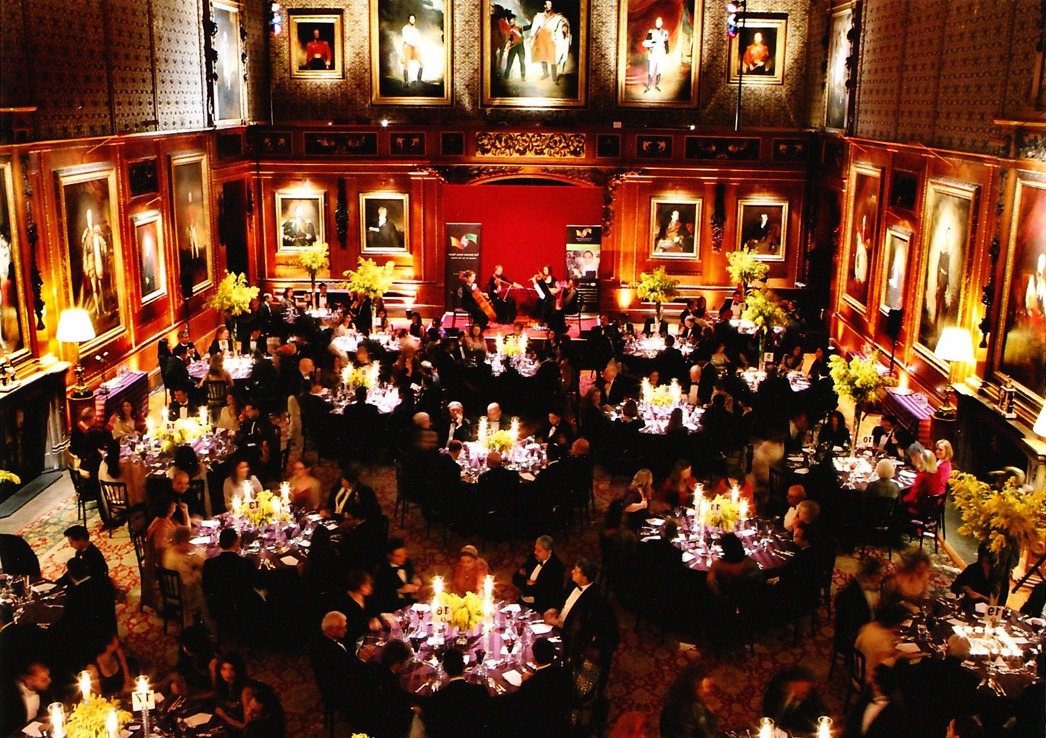

કચ્છની ધીંગી ધરતી પર રામભાઈ ખૂંટી દ્વારા ભવ્ય સંતવાણી અને વિવિધ કાર્યક્રમો યોજાયા
કચ્છની ધીંગી ધરતી પર રામભાઈ ખૂંટી દ્વારા ભવ્ય સંતવાણી અને વિવિધ કાર્યક્રમો યોજાયા
 અહેવાલઃ-મહેર એકતા ન્યુઝ
અહેવાલઃ-મહેર એકતા ન્યુઝ
આપણી મહેર જ્ઞાતિમાં શોર્ય, ખુમારી, દાતારી, આવકાર જેવા અનેક ગુણો પથરાયેલા છે. અને તેમાંય ખાસ કરીને આજે આપણો સમાજ માત્ર પોરબંદર જ નહિ પરંતું દેશ અને વિદેશના સીમાડાઓ પાર કરી પોતાના ધંધા અને બીજનેશમાં આગળ પડતું સ્થાન ધરાવતો થયો છે. અને જે તે વિસ્તારમાં મહેર ન હોય તે વિસ્તારમાં પણ તે એવી રીતે ભળી જવાની પણ આવડત ધરાવતો થયો છે. તે વાતની પ્રતિતી અમોને કચ્છ ખાતે રહેતા રામભાઈ ખુંટીમાં જોવા મળી હતી.
તાજેતરમાં જ કચ્છના ભચાઉ તાલુકાના ખારોઈ ગામે પોતાની વાડીયે રામભાઈ ખુંટી દ્વારા તા.ર૭/૧ર/ર૦૧રને મંગળવારના રોજ શ્રીરામદેવપીર મહારાજની પ્રસાદી અને ગાયોના લાભાર્થે સંતવાણીનું ભવ્ય આયોજન કરવામાં આવ્યું હતું.
જેમાં બપોરના સમસ્ત ખારોઈ ગામનું સામુહિક ભોજનનું આયોજન કરવામાં આવ્યું હતું. બાદ રાત્રીના ૮ કલાકે શ્રીસંત રાસ મંડળ-સીમર દ્વારા મણીયારો, તલવારની પટ્ટાબાજી, ઢાલ-તલવાર રાસ વગેરે રાસની રમઝટ બોલાવી હતી. આ રાસ દરમ્યાન પરબતભાઈ રાણાવાયા (સિંનપુરવાળા) અને રામભાઈ ભગત (મૈયારીવાળા)એ મહેરના દુહા-છંદ દ્વારા આપણી મહેર સંસ્કૃતિને ધબકતી કરી હતી. ત્યાર બાદ આપણી પ્રખ્યાત ભજનિક કલાકાર અને સંતવાણીના આરાધક શ્રીહિનાબેન મોઢવાડીયા, અને આપણી જ્ઞાતિના પ્રખ્યાત ભજન સમ્રાજ પરબતભાઈ રાણાવાયા તેમજ કોકીલકંઠી લલીતાબેન ઘોડાદરા અને સંતવાણી આરાધક, પરસોત્તમપરી ગોસ્વામીનો સંતવાણી સંતવાણી કાર્યક્રમ યોજાયો હતો.
તેમજ તા.ર૮/૧ર/ર૦૧રને બુધવારના રોજ ભવ્ય લોક ડાયરાનું આયોજન કરેલ હતું જેમાં ભીખુદાનભાઈ ગઢવીએ લોકસાહિત્યની વાતો પીરસી હતી. તો લક્ષ્મણભાઈ બારોટ, નિરંજનભાઈ પંડયા અને લલીતાબેન ઘોડાદરાએ ભજનોની રંગત જમાવી હતી.
આમ રામભાઈ ખુંટીની વાડીયેએ બે દિવસીય ભજન, ભોજન અને ભકિતનો ત્રિવેણી સંગમ સર્જાયો હતો.
સમગ્ર કાર્યક્રમનું સુંદર સંચાલન મંજુલાબેન બાપોદરાએ કર્યું.
વિવિધ સમાજો દ્વારા રામભાઈ ખુંટીનું અને મહેર જ્ઞાતિની લેખીકા મંજુલાબેન બાપોદરાનું પણ સન્માન કરાયું.
રામભાઈ ખુંટીની વાડીયે યોજાયેલ સંતવાણીના કાર્યક્રમમાં તાજેતરમાં રામભાઈ ખુંટી દ્વારા સોનાની લગડી જેવી કિંમતી દોઢ કરોડની જમીન ગાય માતાને કાજે ગૌશાળામાં દાનમાં આપેલ હતી જેને લઈને આજે ખારોઈ ગામના ઉપસરપંચશ્રી હેમુભા હનુભા સોઢા, ખારોઈ નવરાત્રી યુવક મંડળ, કચ્છ મિત્ર મંડળ, મુંબઈ વેપારી મંડળ, નારણભાઈ ગોવિદભાઈ ગામી, તે ઉપરાંત કકરવા, માનપોડ અને ખારોઈ ગામના જૈન સમાજના અગ્રણીઓ, આહિર સમાજ, કોળી સમાજ, રજપુત સમાજ સહિત ગૌશાળાના ટ્રસ્ટીઓ અને વિવિધ સમાજના અગ્રણીઓએ રામભાઈ ખુંટી અને તેમના પરીવારનજનોનું શાલ, પુષ્પગુચ્છ અને મોમેન્ટો સન્માનપત્રથી ભવ્ય સન્માન કર્યું હતું જેને ઉપસ્થિત સૌએ વધાવી લીધું હતું.
તો કાર્યક્રમના બીજા દિવ
સે ખારોઈ ગામની બાજુમાં આવેલા મનફરા ગામમાં ગાયોના લાભાર્થે કચ્છના વતની અને મુંબઈ સ્થિત મહાજનપંચસંઘે રામભાઈ ખુંટીનું ગૌશાળાને જમીન અર્પણ કરવા બદલ અને મંજુલાબેન બાપોદરાનું મુબઈના પૂર્વ કમીશનર જી.આર .ખેરનાર સાહેબનું જીવન ચરીત્ર એકલો પથીક નામનું પુસ્તક જે મંજુલાબેન બાપોદરાએ લખેલ છે. તે બદલ અને ખુમારી સાહસવૃતિને બીરદાવતા તેમનું પણ વિશેષ સન્માન થયેલ આ બન્ને સન્માનને ભુખુદાન ભાઈ ગઢવીએ બહુ જ સારા શબ્દોમાં બિરદાવતા કહેલ કે, કચ્છની ધરતી પર કોઈ મહેર સમાજના વીરલાઓનું સન્માન થયું હોય તો કદાચ આ ઈતિહાસની પ્રથમ ઘટના હશે. અને એ મંચ પરથી રામભાઈને દાનવીર અને મંજુલાબેનને નારી રત્નના સન્માનથી નિરંજનભાઈ પંડાયાએ પણ નવાજયા હતા. અને ભીખુદાનભાઈ ગઢવીએ પોતાની આગવી શૈલીમાં મહેરની ખાનદાની, ખુમારી, ખુદદાની અને દાતારીના મન ભરીને વખાણ કર્યા હતા.
રામભાઈનો પશુ અને પક્ષી પ્રત્યેનો અનોખો પ્રેમ
રામભાઈ ખુંટી માત્ર દાનવીર જ નથી પરંતુ સાથે સાથે તેઓ પશુપ્રેમી પણ છે. તેથી તો તેમણે પોતાની જમીન ગાયોને અર્પણ કરી છે. રામભાઈ જેેટલા પશુપ્રેમી છે. એટલા જ પક્ષીપ્રેમી પણ છે. કારણ કે, તેમની વાડીયે કબુતરો, ચકલી સહિતના વિવિધ પક્ષીઓ રોજ ચણ ચણવા આવે છે. અને રામભાઈ પણ ઉઠીને પહેલા ચણ નાખે, પછી પશુ માટે પાણી ભરે અને તે પછી જ દાતણ અને નાસ્તો અને પુંજા-પાઠ ઈત્યાદી પ્રવૃતિઓ કરે છે. મહેર એકતા અખબારની ટીમે રામભાઈની વાડીની મુલાકાત લીધી ત્યારે રામભાઈના બે રૂમો તો પક્ષીઓના ચણ માટે જોવા મળ્યા હતા. અને એક મોટો ગોદામ ગાયો માટેની નિરણ પણ જોવા મળી હતી. આમ રામભાઈ ખરાઅર્થમાં દાનવીરની સાથે પશુ અને પક્ષીપ્રેમી છે.
મોટી સંખ્યામાં જ્ઞાતિઆગેવાનો હાજર રહ્યા..
ખારોઈ ગામે રામભાઈ ખુંટીની વાડીયે તા.ર૭/૧ર/ર૦૧રને મંગળવારના રોજ શ્રીરામદેવપીર મહારાજની પ્રસાદી અને ગાયોના લાભાર્થે યોજાયેલ સંતવાણીના કાર્યક્રમમાં રામભાઈ ખુંટીના આમંત્રણને માન આપીને સગા-સબંધીઓ, સ્નેહીજનો, તેમજ બરડા વિસ્તારના જ્ઞાતિ આગેવાનો, ઘેડ વિસ્તારના જ્ઞાતિઆગેવાનો, પોરબંદરના જ્ઞાતિ આગેવાનો, માણાવદર મેર સમાજના આગેવાનો, સીમર રાસ મંડળ, રાજકોટ મહેર સમાજના આગેવાનો, અમદાવાદ મહેર સમાજના આગેવાનોએ અને સમસ્ત કચ્છ મહેર સમાજ હાજર રહ્યા હતા.
સીમર રાસ મંડળનું થયું ઉદઘાટન
આ પ્રસંગે સીમર ગામની શ્રી સંત રાસ મંડળની ટીમે પ્રથમ વખત જ પોતાના કાર્યક્રમની શરૂઆત કચ્છની ધરતી પરથી કરી હતી. આ ટીમને પરબતભાઈ ઓડેદરા, માલદેભાઈ ઓડેદરા, નોઘણભાઈ ઓડેદરા દ્વારા ટ્રેનીંગ આપવામાં આવે છે.
રામભાઈ મહેર સમાજનું નાક અને દાનવીર છે. -હિરાલીબેન રાજશાખા
રામભાઈ ખુંટીની વાડીયે યોજાયેલ રાત્રીના સંતવાણીના કાર્યક્રમમાં રામભાઈ ખુંટીના ભવ્ય સન્માન બાદ કચ્છના નલીયા ખાતે બાળ વિકાસ અધિકારી અને આપણી જ્ઞાતિના કલાસ-ર અધિકારી હિરાલીબેન રાજશાખાએ ઉપસ્થિત સૌ જ્ઞાતિજનોને સંબોધતા જણાવેલ કે, આ કચ્છની ધરા પર રામભાઈ ખરેખર જેમ દુધમાં સાકર ભળી જાય એ અહીના લોકો સાથે ભળી હળી અને મળી ગયા છે. રામભાઈ આપણી જ્ઞાતિના સાચા દાનવીર છે અને આપણા સમાજનું નાક પણ છે. તેમને જેટલા અભિનંદન આપીયે તેટલા ઓછા જ ખુબ ખુબ શુભેચ્છા કે તમારા હાથથી આવાને આવા સત્કાર્યો થતા રહે.
શ્રીપાર્થકુમાર કાળુભાઈ ઓડેદરાએ પૂ.ભાઈશ્રીનું સ્વાગત
 જુનાગઢના વિવેકાનંદ ગ્રાઉન્ડ ખાતે તાજેતરમાં પૂ.ભાઈશ્રી રમેશભાઈ ઓઝાની શ્રીમદ્ ભાગવત કથાનું ભવ્ય આયોજન કરવામાં આવ્યું હતું. આ નિમીત્તે પૂ.ભાઈશ્રીનો ઉતારો વાડલા ફાટક ખાતે આવેલી પાર્થ એકેડમી ખાતે રાખવામાં આવેલ હતો. ત્યારે પાર્થ એકેડમીના માલીક શ્રીપાર્થકુમાર કાળુભાઈ ઓડેદરાએ પૂ.ભાઈશ્રીનું સ્વાગત કર્યું હતું. આ તકે પૂ.ભાઈશ્રીએ પાર્થ એકેડમીના વિદ્યાર્થીઓને સંબોધન કરતા જણાવ્યું હતું કે, આ સ્કુુલના સંચાલક કાળુભાઈ અને રૂડીબેન વિદ્યાર્થીઓને માતા-પિતા જેટલો જ પ્રેમ આપે છે. અહી વિદ્યાર્થીઓને અભ્યાસમાં ખુબ રસ પડે તેવું યોગ્ય અને સારૂ વાતાવરણ પણ છે. તો પાર્થકુમાર પણ સારૂ સારૂ સંચાલન કરે છે. તેમ જણાવ્યું હતું.
જુનાગઢના વિવેકાનંદ ગ્રાઉન્ડ ખાતે તાજેતરમાં પૂ.ભાઈશ્રી રમેશભાઈ ઓઝાની શ્રીમદ્ ભાગવત કથાનું ભવ્ય આયોજન કરવામાં આવ્યું હતું. આ નિમીત્તે પૂ.ભાઈશ્રીનો ઉતારો વાડલા ફાટક ખાતે આવેલી પાર્થ એકેડમી ખાતે રાખવામાં આવેલ હતો. ત્યારે પાર્થ એકેડમીના માલીક શ્રીપાર્થકુમાર કાળુભાઈ ઓડેદરાએ પૂ.ભાઈશ્રીનું સ્વાગત કર્યું હતું. આ તકે પૂ.ભાઈશ્રીએ પાર્થ એકેડમીના વિદ્યાર્થીઓને સંબોધન કરતા જણાવ્યું હતું કે, આ સ્કુુલના સંચાલક કાળુભાઈ અને રૂડીબેન વિદ્યાર્થીઓને માતા-પિતા જેટલો જ પ્રેમ આપે છે. અહી વિદ્યાર્થીઓને અભ્યાસમાં ખુબ રસ પડે તેવું યોગ્ય અને સારૂ વાતાવરણ પણ છે. તો પાર્થકુમાર પણ સારૂ સારૂ સંચાલન કરે છે. તેમ જણાવ્યું હતું.
મહેર સમાજના આગામી કાર્યક્રમોની રૂપરેખા
મહેર સમાજના આગામી કાર્યક્રમોની રૂપરેખા.
તા.૩/ર/૦૧ર
ધંધુસર ગામે સમસ્ત ધંધુસર ગામનું સામુહિક ભોજન અ ને ભીખુદાન ગઢવી, પરસોત્તમ પરી અને શૈલેષ મહારાજનો સંતવાણીનો પોગ્રામ આયોજક મોહનભાઈ સુત્રેજા
તા.પ/ર/૦૧ર
રાજકોટ ખાતે રાજકોટ મહેર સમાજનું સ્નેહ મિલન
તા.૬/ર/૦૧ર
સુત્રાપાડા ખાતે સોમનાથ, વેરાવળ ઉના અને સુત્રાપાડા મહેર સમાજનું સ્નેહ મિલન, જમણવાર તેમજ તેજસ્વી વિધાર્થીઓનો સન્માન સમારોહ
તા.૯/ર/૦૧ર
કુતિયાણા ખાતે સંતવાણીનો કાર્યક્રમ આયોજક રામદેભાઈ પરમાર
તા.ર૬ -ર૭/ર/૦૧ર
કોટડા ગામે બે દિવસીય બાર પહોર પાઠ અને લોક ડાયરો આયોજક-સમસ્ત કોટડા ગ્રામજનો
મહેર એકતા અખબાર ગ્રૃપ તરફથી ઉપરોકત કાર્યક્રમની સૌ જ્ઞાતિજનોને યાદી પાઠવવામાં આવે છે.
આપ સૌ જ્ઞાતિજનોને વિનંતી કે, આપના ગામ અને આપની આપની આજુ બાજુમાં બનાતા આપણી જ્ઞાતિના કાર્યકમોની યાદી અમનો મોકલાવશો.
Cricket Tournament – London 2011
London Cricket Tournament – 2011
On Sunday 31st July London hosted the Maher 2011 Cricket tournament, with members of the Maher community coming from across the country to take part. Unlike previous tournaments where the teams were met by rain and cold, this time they were greeted with sunshine and three pitched for a day full of cricket. Adults and youths alike had a great day as mentioned by Mitesh Karavadra “the cricket tournament was a great day and also a great success, as not only did everyone have a great time, but it was a perfect opportunity for all members of the Maher Community to meet and mingle with one another, especially those that had travelled from towns and cities across the UK to take part in this festive day”
With India’s win in the Cricket World Cup, it seems that Cricket is the sport that all Indians want to play, this enthusiasm for the sport was emphasised by Leicester who not only had one team or two but FIVE! But though these teams showed the competitive side of the sport with each team determined to win, the fun side of cricket was shown by the Loughborough and London teams. What they lacked on the pitch they more than made up for during the day through there sportsmanship, support and good natured laughter that kept us few onlookers entertained.
It was like any other Maher tournaments filled with competition, controversies and commitment. Though all teams played their best it was Leicester against Leicester in the finals. Due to unscheduled breaks, lack of co-operation and games going over the allotted time the final wasn’t played which would have made this a great tournament. However Leicester were the winners resulting in them taking home the shield yet again but his time as joint winners.
Though the debate of “virtual cricket” was continued the adults played a series of games, however there were no under 16s teams which put a damper on the festivities. Hopefully next year there will be more of a verity of teams in terms of where they are from as well as age. And though this is repeated every time we are once again hopeful that more members from the hosting town come out to not only support the teams but socialise with one another, an opportunity that these tournaments give us.
Leicester Maher Community Association Newsletter 2011
Don’t forget us Mahers here in the West please!?
Our Heritage (2)
The Maher community has a rich heritage originating from the Saurashttra region of Kathiawar peninsula, Gujarat, India. Here in the West (UK) much work has been done and is on going to facilitate social and cultural needs for the younger generation in respect of the environment they thrive in. The community has strong connections with its counterparts in India; maintaining traditional values and customs.
The Leicester Maher Community Association (LMCA)
The Leicester Maher Community Association (LMCA) is a registered charity working closely with its community members in the United Kingdom, USA, Europe, and Asia to promote religious, cultural, social, and educational matters within the Maher community. Please find below a list of the existing committee members:
|
Position |
Full Name |
Responsibilities |
| Trustees | Nathubhai Avka Gorania (Managing) | Oversee the LMCA charitable status |
| Dr Bhimabhai Arjan Odedra | ||
| Mr Jivabhai Lakha Odedra | ||
| Mr Jivabhai Khima Ranavaya | ||
| President | Mr Lakhansibhai Modhwadia | Lead the LMCA committee |
| Vice | Mr Rajshibhai Modhwadia | |
| Secretary | Mr Nagajanbhai Bapodra | Oversee the running of the LMCA / daily running of the centre / meetings etc |
| Vice | Mr Dilipbhai Karavadra | |
| Treasurer | Mr Sudhirbhai Odedra | Oversee the accounts of the LMCA |
| Vice | Mr Dilipbhai Keshwala | |
| Members | Mr Maheshbhai Odedra | Working committee members who are regular attendees at committee meetings and have an input in the decision making process. These committee members also lead innovation projects affecting the wider community e.g. Pratapbhai, Hiteshbhai, Dilipbhai Keshwala are leading the ‘dandia’ groups. |
| Mr Pratapbhai Lakha Odedra | ||
| Mr Pratapbhai K Odedra | ||
| Mr Hiteshbhai Godhania | ||
| Mr Lakhubhai Godhania | ||
| Mr Rambhai Godhania | ||
| Mr Mandanbhai Modhwadia | ||
| Voluntary Contribution | Mr Jethabhai Karavadra | Committee members who contribute mostly during festivities e.g. Navratri, Sharad Purnima, and Diwali. |
| Mr Sureshjibhai Odedra | ||
| Mr Pratapbhai Jethwa | ||
| Mr Rambhai Tukadia | ||
| Mr Rajubhai Gorania | ||
| Mr Hamirbhai Odedra | ||
| Mr Laxmanbhai V Odedra | ||
| Directors Input | Mr Rajeshbhai Odedra (Managing) | Directors of the Maher LTD Company/Maher Holdings which owns the Maher Centre building. They oversee the lease of the centre to LMCA. |
| Mr Nagajanbhai Bapodra – Leicester | ||
| Mr Nathabhai Odedra – Leicester | ||
| Mr Bhurabhai Modhwadia – Leicester | ||
| Mr Keshubhai Maher – Birmingham | ||
| Mr Nageshbhai Odedra – Birmingham | ||
| Mahila Mandal | Mrs Tamuben Sida (Chair) | Group of ladies who make immense contribution to the community by organising events and activities promoting cultural/social values |
| Mrs Bhanuben Sida | ||
| Mrs Deviben Khunti | ||
| Mrs Pushpaben Odedra |
Paid Employees/Contractors: Vivekbhai Khistariya (Premises Manager), Rambhai Modhwadia (Cleaning/Setup)
Bhikubhai Kotecha of ‘Sterling Accountants’ is LMCA accountant.
Mahers in other cities and towns also have very similar committee set up under the ‘U.K. Maher Samaj’ (body/committee) umbrella who’s current president is Mr Keshubhai Maher (Odedra).
The Association is further responsible for the day to day running and management of the Maher Centre. The centre; first of its kind in UK for our Community was opened in the Aug 1996, with a grand ceremony that attracted thousands of people from all parts of the world. To date, the Centre has hosted countless number of social, cultural, charitable, religious, and commercial events for not only the Maher community, but further for the wider community.
Regeneration Project
Our community centre has now completed the first phase of the major refurbishment since it was opened. The regenerated building now has state of the art facilities for weddings, parties, exhibitions and all major events, including social and cultural events. In the second phase, a separate Sports Hall will extend the facilities offered to the wider community. The Maher Centre is no doubt first choice in comparison to its competitors within the market. The competitive rates, facilities, large car park, and well rated customer service has attracted clients from all over the country and continues to do so.
With pressures of time and the environment we thrive in; transformation certainly plays a vital role in preserving our rich heritage and culture. Materialistic factors such as the community centre itself have and will continue being a major part of our Samaj here in the West. Months of dedication from several community members have today shaped our community centre into a state of the art building that will meet various conference and banqueting needs, whilst continuing to be a cultural hub for our Samaj. We now need to ensure various strategies are in place in order to make the centre sustainable for future generations.
Please call our centre or log onto www.mahercentre.com for information and enquiries relating to new booking procedures and check availability. The booking officer can work with you to customise and tailor your event to your needs.
In what form does leadership exist in our community?
Leadership has been described as the “process of social influence in which one person can enlist the aid and support of others in the accomplishment of a common task“. Definitions inclusive of nature of leadership have also emerged. Alan Keith of Genentech states that, “Leadership is ultimately about creating a way for people to contribute to making something extraordinary happen.” According to Ken “SKC” Ogbonnia, “effective leadership is the ability to successfully integrate and maximize available resources within the internal and external environment for the attainment of organizational or societal goals.”
Source: http://en.wikipedia.org/wiki/Leadership
On Saturday the 2nd of July 2011, an opening event was hosted by the Leicester Maher Community Association to showcase the refurbished building. In my 6 years experience of volunteering with our community, I was positively amazed at the level of leadership shown by various individuals in many different ways before and during the opening event itself. The builders came and did their job, but it was the Maher youths who dedicated months of time and hard work to ensure the premises was in top condition ready for our elders to come and appreciate the investment. From gardening, to scrubbing the floor, to sorting old clutter, to finishing off paint jobs, to cleaning the community centre all contributed to having the place ready for the opening.
Who are the leaders?
The opening event itself created a platform for many dedicated individuals who worked behind the scenes to make what some of our elders called a dream and an ambition. The board members of the regeneration project were Dr Bhimabhai Odedra, Keshubhai Odedra, and Bhojabhai Karavadra. The project itself was managed by Rajeshbhai Odedra and Ajaybhai Modhwadia, whilst Nagajanbhai Bapodra coordinated the project. Months of dedication through ‘Tun, Mun, Dhun’ certainly ensured an efficient delivery of the project meeting the needs to today’s youth.
Who are the leaders?
It was certainly pleasing to hear various individuals speak during the opening with some interesting key messages encouraging young people to preserve and build on our community spirit. A historical overview was delivered by Jiwabhai Odedra (Trustee of LMCA) who touched base with the migration of Mahers from India and Africa to their present settlement here in the West. Dr Virambhai Godhania (President of Maher Supreme Council) congratulated the team overseeing the project and reflected on the importance of education. Lakhansibhai Modhwadia (President of LMCA) delivered a humble speech about the hard works and efforts put in the prese
rvation of our culture here in the West by various elders in the last 40 years and paid homage to some of them whom are sadly no longer with us. Parbatbhai Sundavadra (Loughborough Mahers) was honoured for his teachings and gave his blessings for all future projects. Bhojabhai Karavadra (Treasurer to UK Maher Samaj) spoke respectively about the efforts towards the project. Pratapbhai Odedra (Executive Member of LMCA) pointed out various strategies that were needed to promote our culture and traditions symbolic to our culture such as ‘Dandia Raas.’
Who are the leaders?
Throughout this section, you have read the question asking who the leaders are. In my observation, a natural distribution of leadership exists within our community. Yes a ‘Management Structure’ is important within any society, group, organisation, establishment etc but leadership can take shape in many different forms. Each and every individual has the potential to lead and show themselves to be at their best; whether this is through contribution within the community they thrive in or encouraging others to do their best. During the renovation of our community centre, there were several members of our community who demonstrated leadership and this made the project a success story.
Communication
I would like to convey congratulations and a say a huge thank you to the efforts of Maher Supreme Council towards our community magazine ‘Sukalp,’ which we have been enjoying for several years. I urge our UK counterparts to ensure their contact details are updated at the centre to ensure you receive a quarterly edition of the ‘Sukalp’. Please note, you are not having to pay for this magazine as the Leicester Maher Community Association makes the payments for every single UK copy and has been doing so since its first inroduction. On this note, I sincerely look forward to collating interesting articles on behalf of UK – ready for forthcoming editions. If you wish to include details of a success story within our community, please do send it across to info@mahercentre.com
Cultural Celebrations
Whilst the summer is appreciated by residents in the UK; autumn is just as favourable bringing with it celebratory events. This year, LMCA have organised various renowned artists to perform at the annual festivities. Details of it are as follows:
|
Event |
Date |
Type |
|
|
1 |
Mixed Dandia-Raas |
Saturday 24th September |
Open to all (Ticketed) |
|
2 |
Navratri |
Wednesday 28th September – Thursday 6th September |
Mahers only (Free) |
|
3 |
Sharad Purnima |
Saturday 15th October |
Open to all (Ticketed) |
|
4 |
Lok Dairo |
Saturday 22nd October 2011 |
Open to all (Ticketed) |
|
5 |
Diwali Gathering |
Saturday 29th October |
Mahers only (Free) |
A celebration is only a celebration when there are people to celebrate it with. Without your support and encouragement, praise and criticism, it becomes difficult for volunteers to organise future events and/or have the motivation. We would like to sincerely request our community members to show your support by attending the above detailed events. On this note, the Diwali Gathering is open to all Mahers here and abroad to celebrate the re-launch of our centre and its facilities. It will also be an opportunity for individual committees to organise and deliver performances by young people within their local associations and catchment area. Further details will be available on our community website www.maheronline.org and on our centre website www.mahercentre.com
Membership
Without the financial support of many, our community centre in Leicester would not have been a reality. This is a request to all community brothers and sisters who have not yet purchased the available membership to become shareholders. The membership will bring with it benefits of booking our centre at discounted rates and community events being free to attend. On this subject, please note membership could possibly become restricted in the future. Please find details of the process of becoming a member:
-
£300 per person to become a shareholder; 10 shares at £30 each
-
£150 for pensioners
-
Shares can be bought by any Mahers over the age of 18
-
Anyone interested is requested to provide 2 forms of identification (passport and utility bill)
Should you wish to find out more information, please contact our community centre through post, telephone, or email; leaving your full name and contact details.
Final Thought
Should you wish to enquire about anything in relation to the Maher Centre and/or any of the events being hosted at the centre, please do so using the following contact methods:
|
Address |
Maher Centre 15 Ravensbridge Drive Leicester LE4 0BZ |
|
Telephone |
0044 0116 242 5360 |
|
Website |
|
|
|
info@mahercentre.com |
As a reminder, Jayubhai Odedra has made immense contribution in updating the UK Maher Contact Directory, which will be published in due course. This will be available to purchase from local associations as well as the Maher Centre. There is a limited number in print and it is advised for you to place your orders as soon as.
On this note, please do visit our community website www.maheronline.org for latest information about our community events and activities. Should you wish to write an article for either the website or ‘Sukalp’ please do send it across to info@mahercentre.com .We look forward to your company over the next few celebratory months.
Thank you
Dilip Rambhai Karavadra
On behalf of the Leicester Maher Community Association
કચ્છ ખાતે રૂપિયા ૧ કરોડની વાડી ગૌ સેવા સમિતીને દાનમાં આપતા રામભાઈ ખુંટી
આપણી જ્ઞાતિમાં શુરવીરતા, દાતારી, ખુમારી, હિમતવાન, નિડરતા, સુંદરતા જેવા કેટલાય ગુણો છે. અને કોઈ વસ્તુંની કમી નથી માત્ર એક જ વસ્તુની કમી છે. અને તે એટલે સહન શકિત ભાઈચારો, પણ હવે ઘણું પરિવર્તન ગયું છે. આપણા યુવા પેઢીમાં શિક્ષણક્ષેત્રે ઘણા સુધારા જોવા મળે છે. આજથી ર૦ વર્ષ પહેલાની વાત કરૂ તો દરેક જુવાનના હાથમાં કુંડલીવાળી લાકડી કે કુહાડી હોય પણ આજના યુવાન ભાઈઓ નીકળે છે. ત્યારે હાથમાં બોલપેન અને ચોપડાઓ જોવા મળે છે. જે આપણી જ્ઞાતિ માટે આનંદની વાત કહેવાય.
આપણા વડવાઓ જ દાતાર છે. એવું નથી આજે ર૧મી સદીમાં માણસ જયારે પૈસા પાછળ ગાંડો બની ગયેલ ત્યારે ૧ કરોડ જેવી માતબર રકમની કિંમતી જમીનનું દાન ગાય માતા માટે આપવું એ કાંઈ સામાન્ય વાત નથી.
આ વાત છે. કુતિયાણા તાલુકાના કોટડાના અને હાલ કચ્છના ભચાઉ તાલુકાના કકરવા ગામને પોતાની કર્મભૂમિ બનાવનાર દાતાશ્રી રામભાઈ ખુંટીની,
રામભાઈએ કચ્છમાં રહીને મેર સમાજનું અનેરૂ ગૌરવ અપાવ્યું છે. જેણે કચ્છ ખાતે પોતાની વાડી ગૌ સેવા સમિતીને દાન આપી છે. અને આ વાડીની કિંમત ૧ કરોડ થાય છે.
નિતી એજ ધર્મમાં માનનાર અને આવી ર્ધામક વૃતિ ધરાવતા રામભાઈ દરરોજ પ૦ થી ૬૦ કિલો પંખીને ચણ, ગાયોને લીલો ચારો નાખે છે. તેમજ જગલમાં અવેડા બનાવી જાતે ટેકટર લઈ તેમાં પાણી નાખી અનેરી સેવાઓ પણ આપે છે. અને પૂણ્યનું ભાથુ બાંધે છે. ભોજન કરો અને કરાવો તે તેમનો જીવન મંત્ર છે.
તાજેતરમાં જ રામભાઈએ પોતાની દાનમાં આપેલ અને ગૌસેવાના લાભાર્થે સંતવાણીનું પણ ભવ્ય આયોજન કરેલ હતું આમ અનોખી સેવા કરનાર રામભાઈને મહેર સમાજમાંથી ઠેર ઠેર શુભેચ્છાઓ મળી રહી છે. ત્યારે મહેર એકતા અખબાર પણ તેમને ખુબ ખુબ અભિનંદન આપે છે.
(અહેવાલ-સરમણભાઈ ઓડેદરા)
Article by Maher Ekta – મહેર એકતા website http://maherakta.wordpress.com/
Ganesh Chaturthi

Ganesh Chaturthi, the great Ganesh festival, also known as ‘Vinayak Chaturthi’ or ‘Vinayaka Chavithi’ is celebrated by around the world as the birthday of Lord Ganesh.

 Lord Ganesh has the unique distinction that his name is always invoked before any other God’s name in any prayer service. Lord Ganesh received this distinction as a blessing from his parents, Lord Shiva and Goddess Parvati. Lord Ganesa is designated as the chief (-eesha) of all of Lord Shiva’s ganas (servers) – hence his name, Ganesh. We begin with an invocation to Lord Ganesh – he of the single tusk, whose vehicle is the mouse and he who penned the Mahabharata with his own hands.
Lord Ganesh has the unique distinction that his name is always invoked before any other God’s name in any prayer service. Lord Ganesh received this distinction as a blessing from his parents, Lord Shiva and Goddess Parvati. Lord Ganesa is designated as the chief (-eesha) of all of Lord Shiva’s ganas (servers) – hence his name, Ganesh. We begin with an invocation to Lord Ganesh – he of the single tusk, whose vehicle is the mouse and he who penned the Mahabharata with his own hands.
vakratunda mahaakaaya suryakoti samaprabhaa nirvighnam kurumedeva sarvakaaryeshu sarvadaa
Salutations to the supreme Lord Ganesh, whose curved trunk (vakra-tunda) and massive body (maha-kaayaa) shines like a million suns (surya-koti) and showers his blessings on everyone (sama-prabhaa). Oh my lord of lords Ganesh (kurume-deva), kindly remove all obstacles (nir-vighnam), always (sarva-) and forever (sarvadaa-) from all my activities and endeavors (sarva-kaaryeshu).
> Vakratunda Ganesha Mantra audio mp3 (118K) This is an extract of the invocation to Lord Ganesh from a track on the Chants of India CD by Ravi Shankar.
Prayer for Prosperity to Lord Ganesh (Shubh Laabh Mantra)
AUM shrim gam saubhaagya ganpataye varvard sarvajanm me.n vaShamaanya namH
The prayer for prosperity is based on the word, gam, which is the beej (seed) mantra for Lord Ganesh. We ask for good fortune (sau-bhaagya) and many blessings and wishes (var-vard) for our current and future life-times (sarva-janam-me.n). We bow in homage (namH) to Lord Ganesh who protects us with long lives (avaShamaanya) of health and happiness. A concise form of this mantra, suitable for multiple rapid repetitions is simply – “Aum gam Ganpataye Namh” – (ॐ गम गणपतये नम:)
> Shubh Laabh Ganesha Mantra audio mp3 (200K) This is a beautiful rendition of the short version of the Shubh Laabh Mantra in mp3 format by Pandit Jasraaj.
Ganesh Gayatri Mantras
T
he Ganesh Gayatris are prayers to Lord Ganesh that are composed in the 24-syllable meter of the original Gayatri Mantra. Several variations of the Gayatri can be composed by invoking the various descriptive names of Ganesh in the appropriate place(s) of the original mantra.
AUM tadapurushhaaya viddhamahe, vakratundaaya dhimahi, tanno danti prachodayaath
We pray to the supreme and perfect male (tadapurusḥāya) who is omnipresent (viddhamahe). We meditate upon and pray for greater intellect (dhīmahi) to the Lord with the curved, elephant-shaped trunk (vakratunḍāya). We bow before the one with the single-tusked elephant tooth (tanno danti) to illuminate our minds with wisdom (prachodayāt).
AUM ekadantaaya viddhamahe, vakratunDaaya dhimahi, tanno danti prachodayaath
We pray to the one with the single-tusked elephant tooth (ekadantāya) who is omnipresent (viddhamahe). We meditate upon and pray for greater intellect (dhīmahi) to the Lord with the curved, elephant-shaped trunk (vakratunḍāya). We bow before the one with the single-tusked elephant tooth (tanno danti) to illuminate our minds with wisdom (prachodayāt).
AUM lambodaraaya viddhamahe, mahodaraaya dhImahi, tanno danti prachodayaath
We pray to the one with the expandable belly (lambodarāya) who is omnipresent (viddhamahe). We meditate upon and pray for greater intellect (dhīmahi) to the Lord with the huge belly (mahodarāya). We bow before the one with the single-tusked elephant tooth (tanno danti) to illuminate our minds with wisdom (prachodayāt).

